After a lifetime in the public eye we know most things about King Charles. But nobody’s ever been able to explain his fascination with Romania, the eastern European country which borders Ukraine.
For reasons not fully explained Charles has bought not one, but two, houses in its Transylvania region – Dracula country. There are no royal connections with the country, except one – Queen Marie of Romania, to whom the king’s great-grandfather George V once proposed marriage.
Marie, a free-spirited and untamed creature, turned George down for two reasons – one, he was boring, and two, they were first-cousins. Her father, the Duke of Edinburgh, was Queen Victoria‘s son and the official family home was Clarence House. She wanted to look further afield for a husband.
However, at barely 17 she was pledged to the Crown Prince Ferdinand of Romania in an arranged marriage. It was a disaster from the start.
Marie was bored and felt belittled by being dumped in what she saw as a ‘tinpot’ country where – having come from the majesty and grandeur of Britain’s royal house – she found herself subject to the petty rules of King Carol I, her husband’s uncle.
King Carol’s grandfather had been ruler of a small German principality, with a population of just 44,000, whereas Marie’s grandmother Queen Victoria ruled over the world’s biggest empire of 300 million.
She didn’t take kindly to being told what to do.
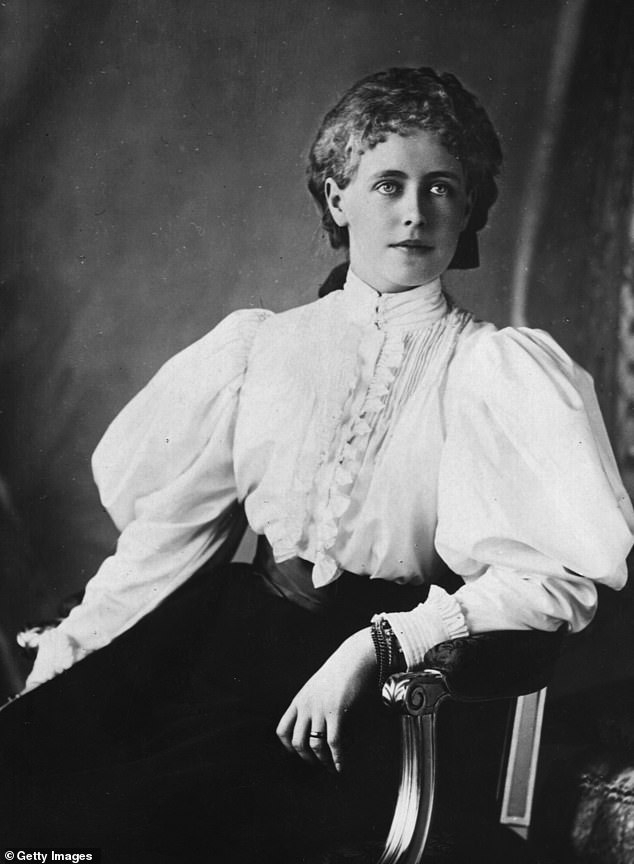
Nine months after her marriage and giving birth to her first child, she begged the doctors for chloroform to ease the pain. They replied, coldly, ‘Women must pay in agony for the sins of Eve’.
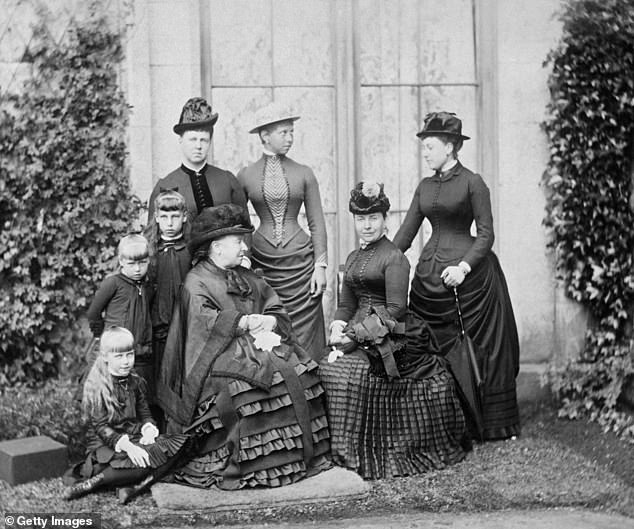
Marie’s father, the Duke of Edinburgh, was Queen Victoria’s son and the official family home was Clarence House . She wanted to look further afield for a husband
Especially when, nine months after her marriage and giving birth to her first child, she begged the doctors for chloroform to ease the pain. They replied, coldly, ‘Women must pay in agony for the sins of Eve.’
So, to pay them back, Marie went out sinning.
According to later reports, her aunt Empress Frederick wrote: ‘The King is a great tyrant in his family and has crushed the independence of Ferdinand so nobody cares about him, nor his beautiful and gifted wife.
‘I fear she gets into scrapes and like a butterfly, instead of hovering over the flowers, burns her pretty wings by going rather [too near] the fire!’
A polite way of putting it – at least three of the six children Marie bore Ferdinand weren’t his. Potential fathers included Barbu Stirbey, the country’s prime minister, a Romanian general, Zizi Cantacuzino, the US multi-millionaire William Waldorf Astor and Joe ‘Klondike’ Boyle, a mega-rich Canadian adventurer.
Tales of orgies, lovers, a suicide, and drunkenness were to spatter Marie’s name with mud over the following years – though that didn’t stop King Charles from opening a new exhibition of her paintings in London recently.
Intrigued by Marie and her story, he visited the Garrison Chapel gallery in Chelsea, London to view her watercolours, which hang alongside some of Charles’s own Romanian paintings in a special exhibition.
That night, nobody mentioned Her Majesty’s fruity past.
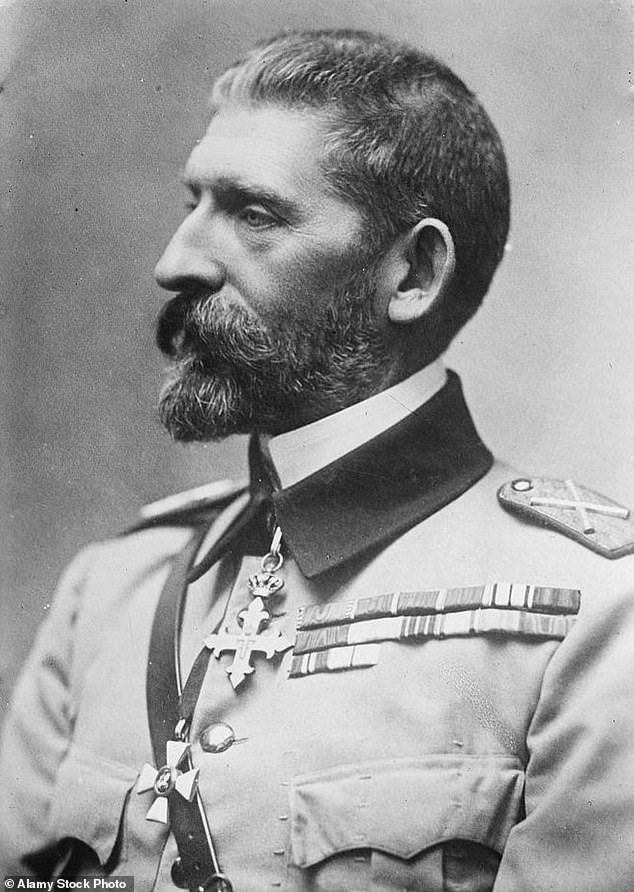
King Carol I was a tyrant in his family and crushed the independence of Ferdinand so nobody cared about him, nor his beautiful and gifted wife, Marie
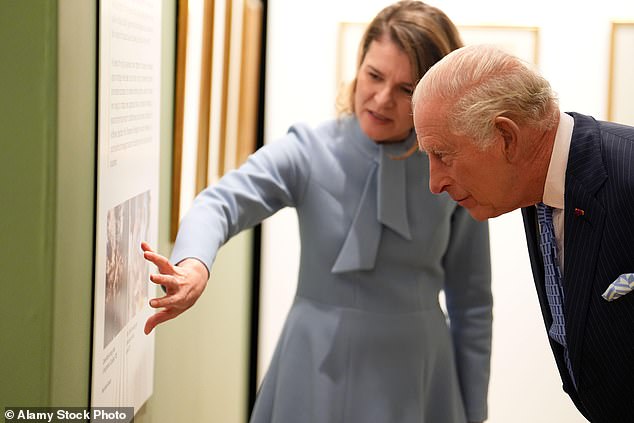
Intrigued by Marie and her story, Charles visited the Garrison Chapel gallery in Chelsea to view her watercolours, which hang alongside some of Charles’s own Romanian paintings in a special exhibition
It had all begun soon after her marriage, when her 24-year old brother Prince Alfred of Edinburgh shot himself. The Romanians looked askance at royal suicides, and when news leaked out that Alfred had contracted a secret marriage with the under-age granddaughter of the Irish Duke of Leinster and had caused a scandal in the British royal family, it forced him to turn his gun on himself.
The story wasn’t true. Instead as one historian put it, ‘Alfred drank himself to death’.
So from the start the Romanians were watching their British princess closely for signs of alcohol abuse – or indeed any other misdemeanour – and were not disappointed.
By the time she became Queen alongside Ferdinand at the age of 38, they had come to an understanding. He would acknowledge all the children as his own, and she would do the best she could to avoid public scandal.
‘They were loyal companions, but their lives only intertwined on certain matters,’ wrote one historian discreetly.
Marie took comfort in her drab marriage by decking herself out with an array of jewellery, the envy of many nobler royal courts across Europe – portraits of her show her with vast arrays of crowns, orders, and gems. But most of all, she’s remembered for a whopping 478-carat sapphire – known as the Queen Marie Sapphire, naturally – the biggest in the world.
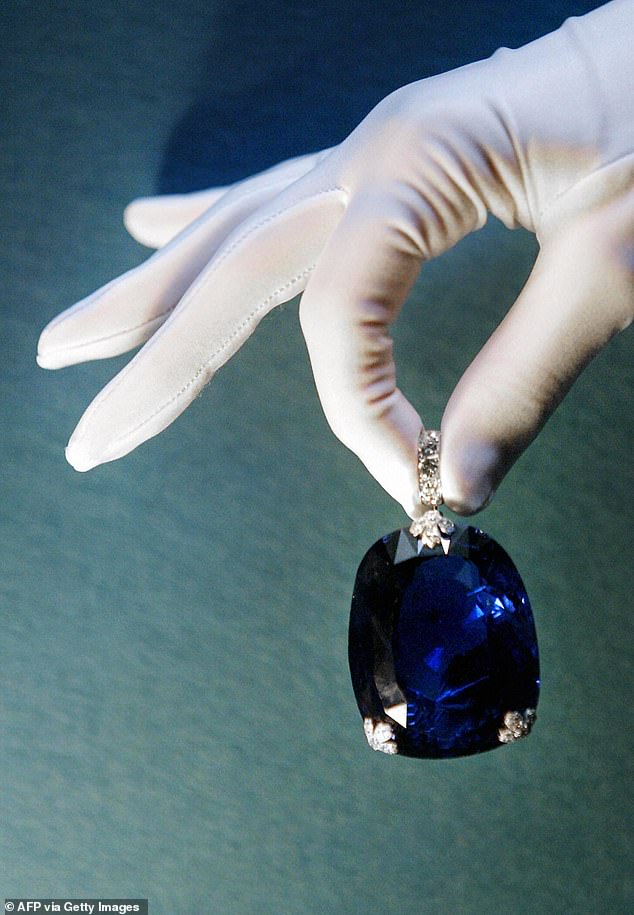
The 478-carat Queen Marie – the biggest sapphire in the world
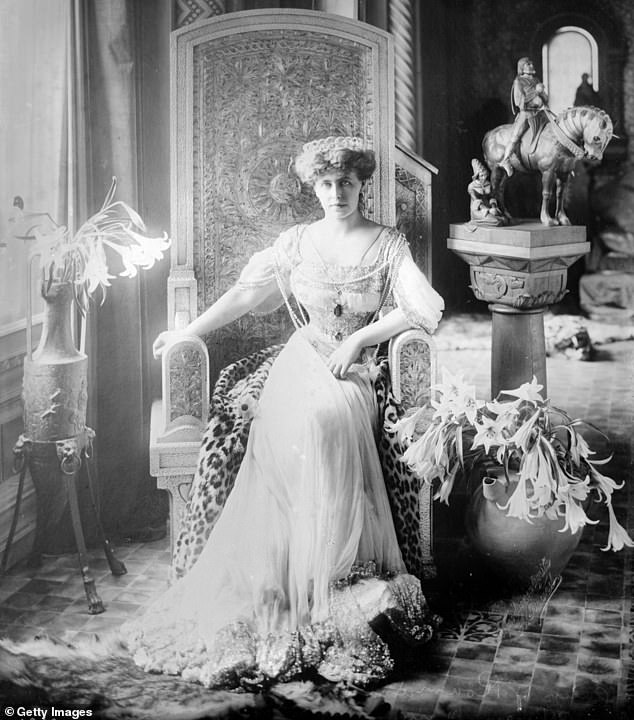
Queen Marie died in 1938, the most elegant and fascinating woman to sit on a European throne
When it sold at Christies in 2003, the jewel fetched £2m, and today would be worth as much as £10m – but her husband had to buy it on the never-never. Romania being a relatively poor country, Ferdinand was forced to arrange an instalment plan for the Cartier jewel.
Lavishly smothered in gemstones, she owned at least six tiaras, plus a couple more that got lost in the Russian revolution.
But Marie understood the power of an intoxicating combination of beauty, royalty, and jewellery – and after the First World War, as politicians dithered over redrawing the map of Europe, she made a spectacular entrance into Paris to claw back the outlying Romanian-speaking regions which surrounded her tiny country.
When she arrived in Paris, Romania had a population of 4.4 million. After she’d done talking, it had shot up to an eye-popping 19.5 million – a four-fold increase. Back at the palace in Bucharest, it was Marie who now wore the trousers.
But after the Second World War, the country was overrun by communism – and that’s when the tales of orgies and alcoholism spread like wildfire. State-sponsored histories designed to debunk everything Marie had done in the years since she became Queen were churned out. She had become, and remained, a heroine to the Romanian people – but the communist government did all it could to rewrite history.
But then so, too, did Marie seek to do a little rewriting. Diagnosed at the age of 62 with cirrhosis of the liver, she boldly declared: ‘Then there must be a non-alcoholic cirrhosis of the liver, because never in my life have I tasted alcohol.’
It was a royal porkie – but accordingly, her personal physician declared she’d died of pancreatic cancer. Even as death loomed, Queen Marie remained obsessively image-conscious.
She died in 1938, the most elegant and fascinating woman to sit on a European throne in the 20th century. No wonder King Charles went to pay homage to her.